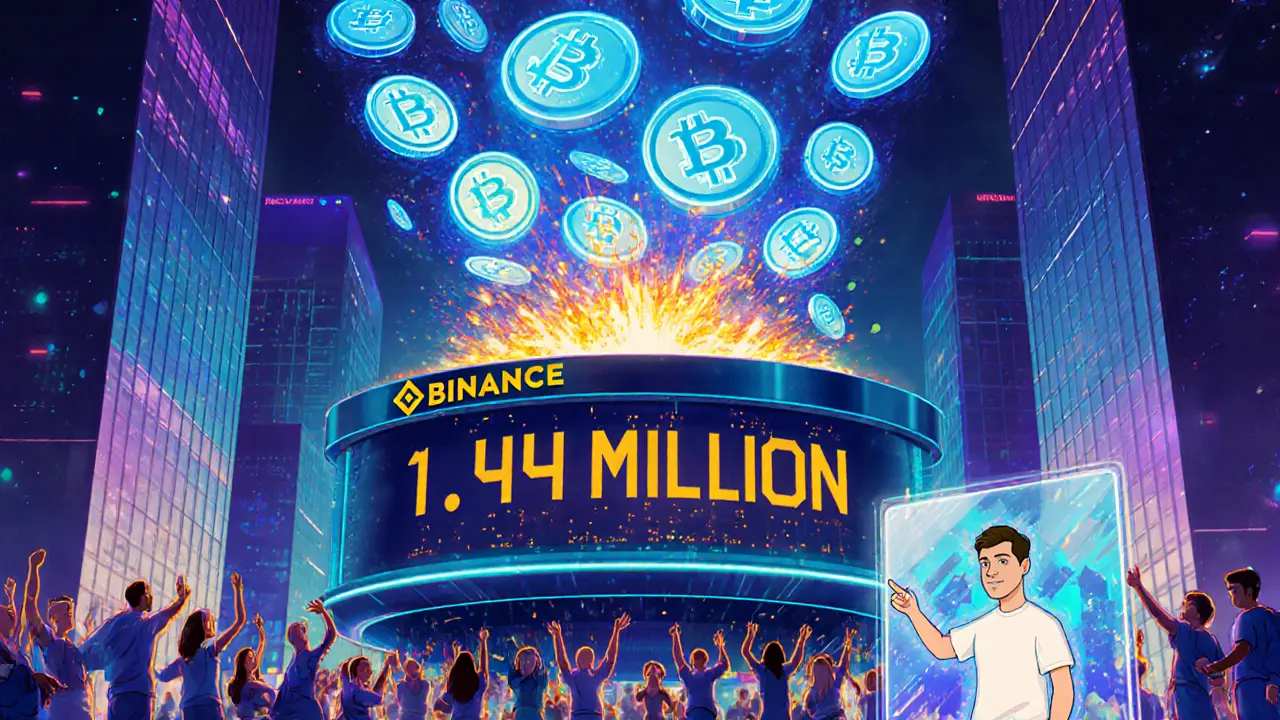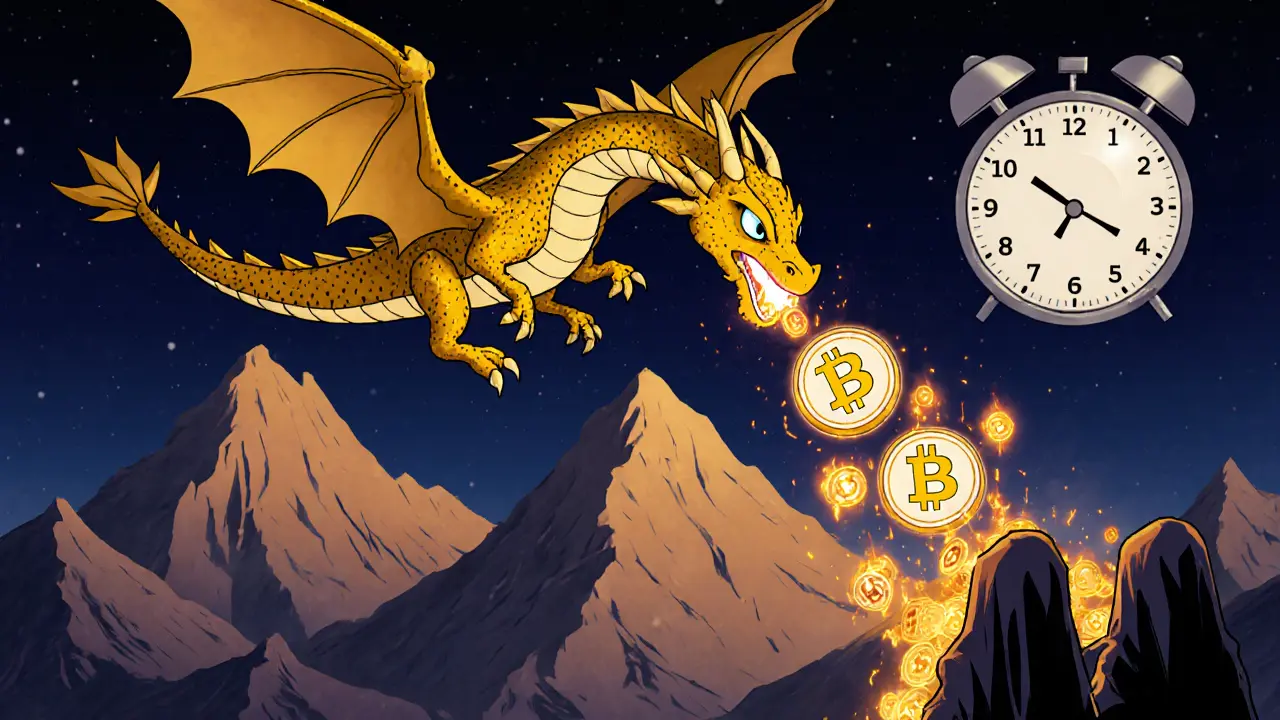By October 2025, the idea that money should get scarcer over time isn’t science fiction-it’s the foundation of over $850 billion in digital assets. Deflationary cryptocurrencies aren’t just a niche trend. They’re the backbone of the most trusted names in crypto, from Bitcoin to BNB, and even the wild new projects trying to outdo them. But here’s the real question: deflationary cryptocurrencies are everywhere, but are they actually working the way people think?
How Deflationary Cryptocurrencies Actually Work
Most people hear "deflationary" and think: "Less supply = higher price." It sounds simple. But the mechanics behind it are anything but. Deflationary tokens don’t just sit there waiting to get rare. They actively destroy themselves. Bitcoin started it all. Its creator, Satoshi Nakamoto, locked in a hard cap of 21 million coins. Every four years, the reward for mining new blocks gets cut in half. In April 2024, that reward dropped from 6.25 BTC to 3.125 BTC. That means only 164,250 new Bitcoins are added each year now-down from over 328,000 before. No more, no less. That’s not a guess. That’s code. Then there’s BNB. Binance doesn’t just mint new tokens. Every quarter, it takes millions of BNB and burns them-permanently removing them from circulation. In their 33rd burn, they erased 1.44 million BNB worth over $1.2 billion. That’s not a marketing stunt. That’s a real reduction in supply. And they’re not done. They’re now on Burn 3.0, where the burn rate adjusts based on real-time market depth. If trading spikes, more tokens vanish. Simple. Predictable. Ethereum took a different path. It doesn’t cap supply. But since EIP-1559 launched in 2021, every transaction fee gets partially burned. In the first nine months of 2025, Ethereum burned 1.2 million ETH-$3.8 billion worth. For 127 days, it was actually shrinking. That’s deflation in action, but only when demand is high. No transaction? No burn. It’s demand-driven, not forced. And then there’s BullZilla ($BZIL). Launched in October 2025, it doesn’t just burn. It has a "Roar Burn Mechanism" that destroys between 0.5% and 5% of every transaction, depending on network activity. Add in a staking platform offering 70% APY, and suddenly you’ve got a token that rewards holding while eating away at supply. It’s not just deflationary-it’s engineered to create a feedback loop: more usage → more burns → higher scarcity → more demand.Why Scarcity Isn’t Enough
Here’s the uncomfortable truth: burning tokens doesn’t automatically make them valuable. You can burn a billion coins, but if no one wants to use them, they’re just digital ash. Dr. Sarah Chen from CoinDesk put it bluntly: 63% of deflationary tokens launched between 2022 and 2024 burned less than 0.1% of their supply annually. That’s like removing a single drop from an ocean. It looks good on a press release, but it doesn’t move the needle. She calls it "burn theater." And users are catching on. Reddit threads are full of people asking: "Why did BNB drop 30% right after a burn announcement?" The answer? Whales knew the burn was coming. They sold ahead of it, betting that the hype would fade. Then, when the burn happened, the price didn’t spike-it crashed. Because scarcity only matters if people believe in the story behind it. Bitcoin works because it’s not just about supply. It’s about trust. Nine out of ten top institutional investors hold it. They don’t care about quarterly burns. They care that no one can change the rules. That’s why it’s called digital gold. BNB works because it’s tied to a real platform-Binance, the world’s biggest crypto exchange. People use it to pay fees, stake, trade, and launch projects. The burn makes it scarcer, but the utility keeps it valuable. BullZilla? It’s still early. Its 70% APY is eye-popping, but it’s also risky. High yields often mean high volatility. And if the network slows down, the burn rate drops. What happens then? Does the hype die? Only time will tell.The Hidden Cost of Deflation: Hoarding Over Spending
Deflation sounds great until you realize what it does to behavior. If you believe your money will be worth more next month, why spend it today? Crypto Basic found that during bull markets, transaction volume on deflationary tokens dropped 22% compared to inflationary ones. People weren’t using them-they were holding them. That’s the opposite of what a currency should do. Think about cash. If you knew your $100 bill would be worth $105 next year, you’d keep it in your drawer. You wouldn’t buy groceries, pay rent, or invest. That’s not healthy for an economy. And it’s not healthy for a blockchain network. Networks need transactions. They need fees. They need activity to stay secure. If users stop transacting, the chain slows down. Miners or validators get paid less. Security weakens. That’s why Ethereum’s burn only works when usage is high. If no one’s sending ETH, no one’s burning it. And if no one’s burning it, the supply doesn’t shrink. The smartest deflationary projects now understand this. They don’t just burn. They reward. BullZilla’s "HODL Furnace" gives users 70% APY for locking up tokens. That’s a trade-off: you give up liquidity, but you get rewarded for helping reduce supply. It’s not perfect, but it’s a step toward balancing scarcity with utility.
Who’s Winning and Why
As of October 2025, the deflationary crypto market is split into three clear tiers:- Store of Value: Bitcoin, Litecoin. Fixed supply. No burns. Pure scarcity. Dominates institutional portfolios. Market cap: $589 billion.
- Ecosystem Tokens: BNB, Ethereum. Burn mechanisms tied to real usage. BNB burns 10.97 tokens per second. Ethereum burns during peak activity. Market cap: $89.4 billion (BNB) and growing.
- Experimental Projects: BullZilla, Safemoon clones. High burn rates, high APY, complex mechanics. Market cap: under $2 billion each, but growing fast.
What’s Next? Seven Trends Shaping 2026
The future of deflationary crypto isn’t just about burning more. It’s about burning smarter.- Hybrid models: 65% of new projects in 2026 will combine burns with staking rewards or utility tokens. No more "burn-only" tokens.
- Algorithmic burns: 12 projects now tie burns to real-world data-like trading volume, gas prices, or even weather patterns (yes, really).
- Community-governed burns: DAOs are voting on burn rates. If users want more scarcity, they vote to burn more.
- Cross-chain burns: Hyperliquid launched a system in September 2025 where burning tokens on one chain triggers a burn on another. Interoperability meets scarcity.
- Burn-to-stake: Some tokens let you burn your coins to earn staking rights. You destroy supply, and you get rewarded for it.
- NFT-integrated deflation: 17 projects now burn NFTs to reduce token supply. Own a rare NFT? Burn it, and your token balance grows.
- Regulatory transparency: Under EU’s MiCA 2.0, projects must publicly disclose burn schedules, amounts, and methods. No more hidden burns.
Should You Invest? Here’s the Real Answer
If you’re looking for a store of value, Bitcoin is still the safest bet. Its supply is fixed. Its history is proven. Its adoption is institutional. If you want exposure to a growing ecosystem with real usage, BNB is the strongest alternative. Its burn is reliable, its platform is massive, and its supply reduction is measurable. If you’re okay with high risk for potentially high reward, BullZilla and similar projects are worth watching-but only if you understand their mechanics. Don’t invest because of a 70% APY. Invest because you believe in the long-term utility. And if you’re thinking of buying a token that burns 0.0001% of its supply per quarter? Walk away. That’s not deflation. That’s a distraction. The future of deflationary cryptocurrencies isn’t about more burns. It’s about better design. Scarcity alone doesn’t create value. Utility, transparency, and trust do.Frequently Asked Questions
What is a deflationary cryptocurrency?
A deflationary cryptocurrency is a digital asset designed to reduce its total supply over time through mechanisms like token burns, transaction fees being destroyed, or fixed supply caps. This creates artificial scarcity, with the goal of increasing value as demand grows while supply shrinks.
Is Bitcoin really deflationary?
Yes. Bitcoin has a hard cap of 21 million coins, and its block rewards halve every four years. After the 2024 halving, only 164,250 new Bitcoins are mined annually. Once all 21 million are mined, no new coins will be created. Existing coins can still be lost or destroyed, making the circulating supply shrink further over time.
How does BNB’s burn mechanism work?
Binance burns BNB tokens quarterly using a formula based on trading volume and BNB price. In October 2025, they burned 1.44 million BNB ($1.2 billion) in their 33rd burn. The goal is to reduce total supply from 137.7 million to 100 million. Since 2022, over 40 million BNB have been burned. The process is automated and publicly tracked.
Does Ethereum burn tokens?
Yes, through EIP-1559. Every time someone sends ETH, a portion of the transaction fee is permanently destroyed. During periods of high network activity-like during NFT drops or DeFi surges-more ETH is burned than is issued as block rewards, making Ethereum deflationary. In 2025, it was deflationary for 127 days, burning 1.2 million ETH worth $3.8 billion.
Are deflationary cryptocurrencies a good investment?
It depends. Bitcoin and BNB have proven track records and real-world utility. Their deflationary features support long-term value. But many newer tokens use burns as marketing gimmicks with negligible impact. If a token burns less than 0.1% of supply per year, it’s not truly deflationary. Always check the burn rate, track supply changes, and understand the project’s utility-not just the hype.
Can deflationary tokens cause economic problems?
Yes, in theory. If users believe a token will be worth more tomorrow, they may stop spending it, which reduces network activity. Crypto Basic found transaction volume dropped 22% on deflationary tokens during bull markets. This can hurt the health of the blockchain. The best projects solve this by combining burns with staking rewards or utility features that incentivize usage, not just holding.
What’s the biggest risk with deflationary crypto projects?
The biggest risk is "burn theater"-projects that announce token burns but destroy such a tiny fraction of supply that it has no real impact. According to CoinDesk, 63% of deflationary tokens from 2022-2024 burned less than 0.1% annually. Without meaningful supply reduction or real utility, these tokens are speculative assets with no long-term foundation.


Kirsten McCallum
October 28, 2025 AT 22:30Henry Gómez Lascarro
October 30, 2025 AT 04:43Will Barnwell
October 30, 2025 AT 15:05Lena Novikova
October 31, 2025 AT 13:17Olav Hans-Ols
November 1, 2025 AT 07:23Kevin Johnston
November 1, 2025 AT 20:58jummy santh
November 2, 2025 AT 08:46Dr. Monica Ellis-Blied
November 3, 2025 AT 19:26Saurav Deshpande
November 4, 2025 AT 22:22Allison Andrews
November 6, 2025 AT 21:36Herbert Ruiz
November 8, 2025 AT 21:16Paul Lyman
November 10, 2025 AT 11:23Anna Mitchell
November 11, 2025 AT 19:21Pranav Shimpi
November 12, 2025 AT 23:50Lawrence rajini
November 14, 2025 AT 22:04